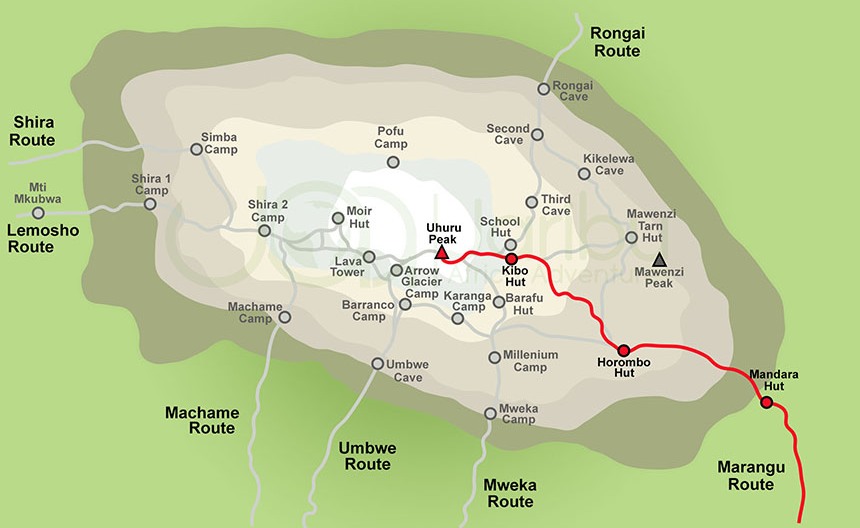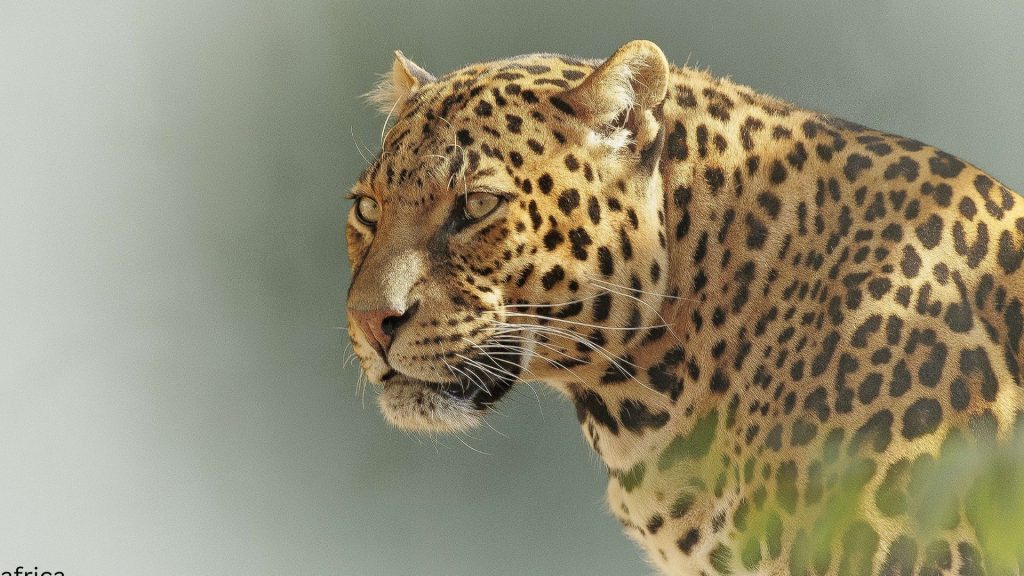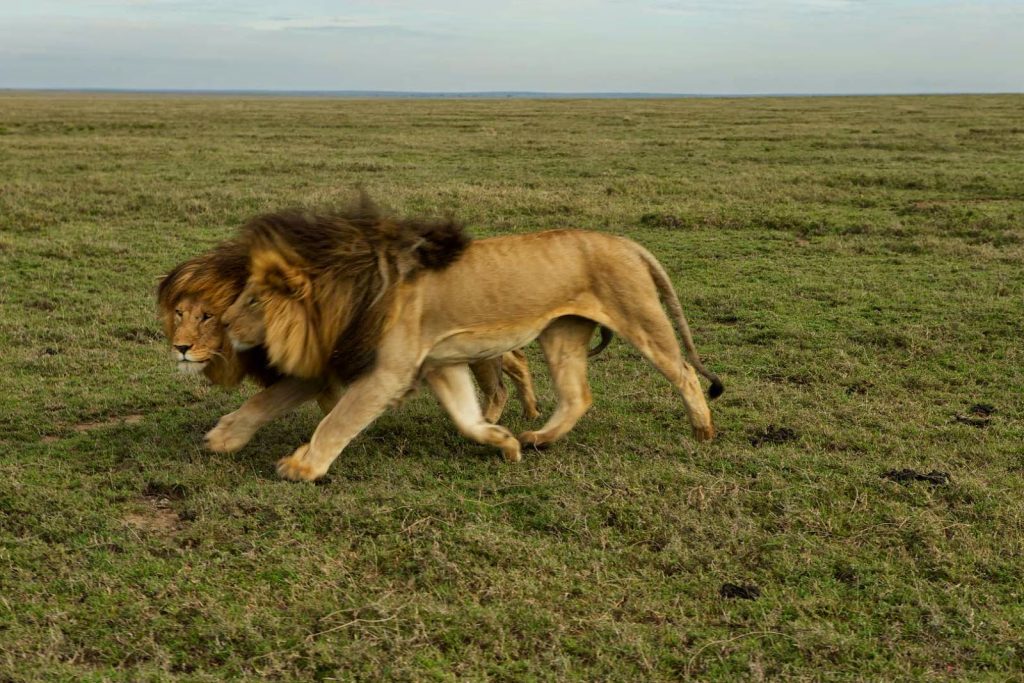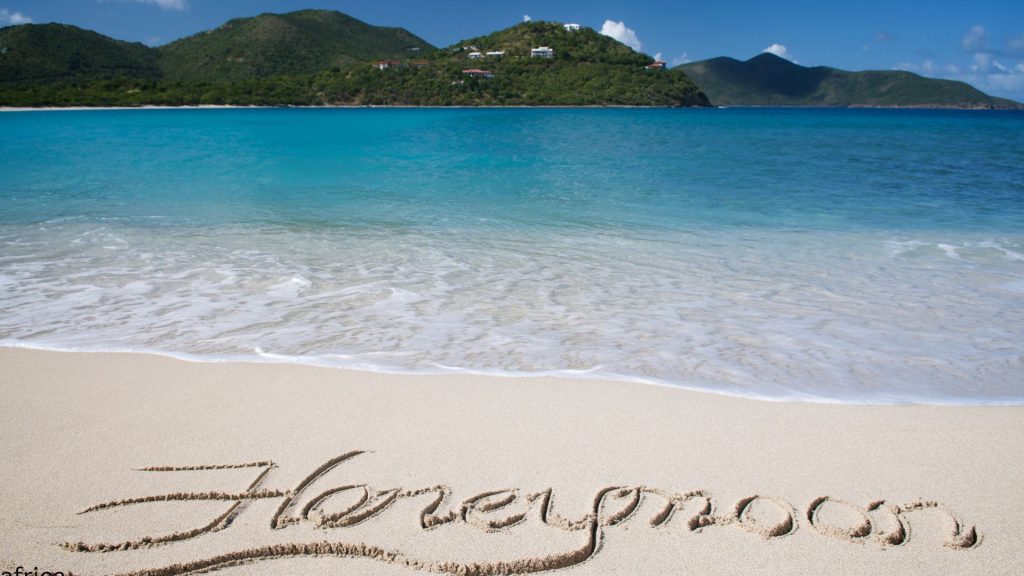Marangu Route
The Marangu Route is jokingly referred to as the “Tourist Route” or “Coca-Cola Route” and It’s called “Tourist Route” for two reasons, One reason is simply its popularity and it makes this climbing route somewhat touristy. The Marangu route is also the only climbing route that uses the same path up and down, which contributes to it being the most crowded climb route on Kilimanjaro and remains one of the oldest Route
The Marangu route is a comfortable walking path with a very steady, gradual slope (at least until you reach the last camp). This gave the Marangu route a reputation as an “easy” climb route And that’s the other reason for the name “Tourist Route“ because it is supposed to be “easy”, the Marangu route is used by many shockingly unprepared “tourists”, rather than trekkers.
The name “Coca-Cola Route” stems from the sleeping huts along the route, They sell the stuff (as well as bottled water and candy bars) The Marangu route is the only Kilimanjaro climbing route that offers hut accommodation and Camping is not allowed on this route, Trekkers staying at these huts will enjoy the comfort of bunk beds fitted with a simple mattress and pillow, providing a cozy rest after a day on the trail. Additionally, the huts offer a convenience not found on other routes — a small shop stocked with a variety of candy bars, bottled water, and refreshing soft drinks. This added comfort and accessibility have earned the Marangu Route its nickname, the “Coca-Cola Route,” making it an appealing choice for those seeking a well-supported and relaxed trekking experience on Mount Kilimanjaro.
A climb on the Marangu route is comparatively cheap. You need no camping equipment (no cost for extra porters to carry the equipment) and you can do the climb in five days/four nights. Also, many cutthroat budget operators run treks on this route.
Is Marangu Route Very Easy?
Marangu route is NOT easy and it is NOT Touristic as it seems Like It is a serious climb Route with very low success rates with a record of only a quarter to a third of the climbers on this route reach the summit of Kilimanjaro and Here Is Why
- The “tourists” on this route are shockingly unprepared.
- A five day climb does not allow for sufficient acclimatization, many climbers have to turn around because of altitude sickness. (You can add an optional acclimatization day.)
- Budget operators have much lower client success rates. Equipment, food, experience level of guides, all that makes a big difference and all that costs money.
- The last day before the summit attempt is a long one and covers 1000 m of altitude difference. There is not much time to recover or acclimatize before setting out again at midnight to climb another 1200 m. Not good.
Why Choose Marangu Route?
Well, even if not as scenic as other routes, it is still a spectacular experience with great views all along, There are number of reasons why you may want to climb Kilimanjaro via the Marangu route
1. You absolutely can not, under no circumstances, imagine sleeping in a tent for five nights or more. (But don’t think those huts offer luxury accommodation or that there are any amenities. There aren’t. You get a mattress and pillow – no linen – on a bunk bed, and you get to eat in a crowded dining hall. No less and no more.)
2. The other reason to select Marangu is if money is your main consideration, before everything else. I you don’t care about scenery, aren’t worried by big crowds, and are willing to accept a reduced chance of success, Marangu is the cheapest option you have. (But do yourself a favour and take that optional extra acclimatisation day.)
Marangu Route Distance
- Distance: The Marangu route is 72 kilometres (45 miles).
- Location: The route approaches Mount Kilimanjaro from the southeast. The trail itself starts at Marangu gate.
- Height: The route reaches the summit of Kilimanjaro at the Uhuru peak reaching a height of 5,895 metres (19,341 feet).
- Trail conditions: During the hike, you will travel through misty forests, moorlands, a desertlike alpine area in the Saddle, and rocky paths and snow when you are near the summit.
As for scenery, of course, the Marangu route is still breathtakingly beautiful. However, it is considered to be less scenic, as the ascent and descent travel along the same path and are sometimes crowded.
The trail is well maintained due to its popularity and will have you travelling through forests or the Saddle (a high-altitude desert) before reaching the Kibo Hut.
Marangu Route Huts
The route itself also attracts novice hikers or trekkers who are looking to enjoy the luxury of sleeping in dormitory-style hut accommodation, and this is the only trail which offers this type of comfort.
The huts in this route are:
- Mandara Hut
- Horombo Hut
- Kibo Hut




